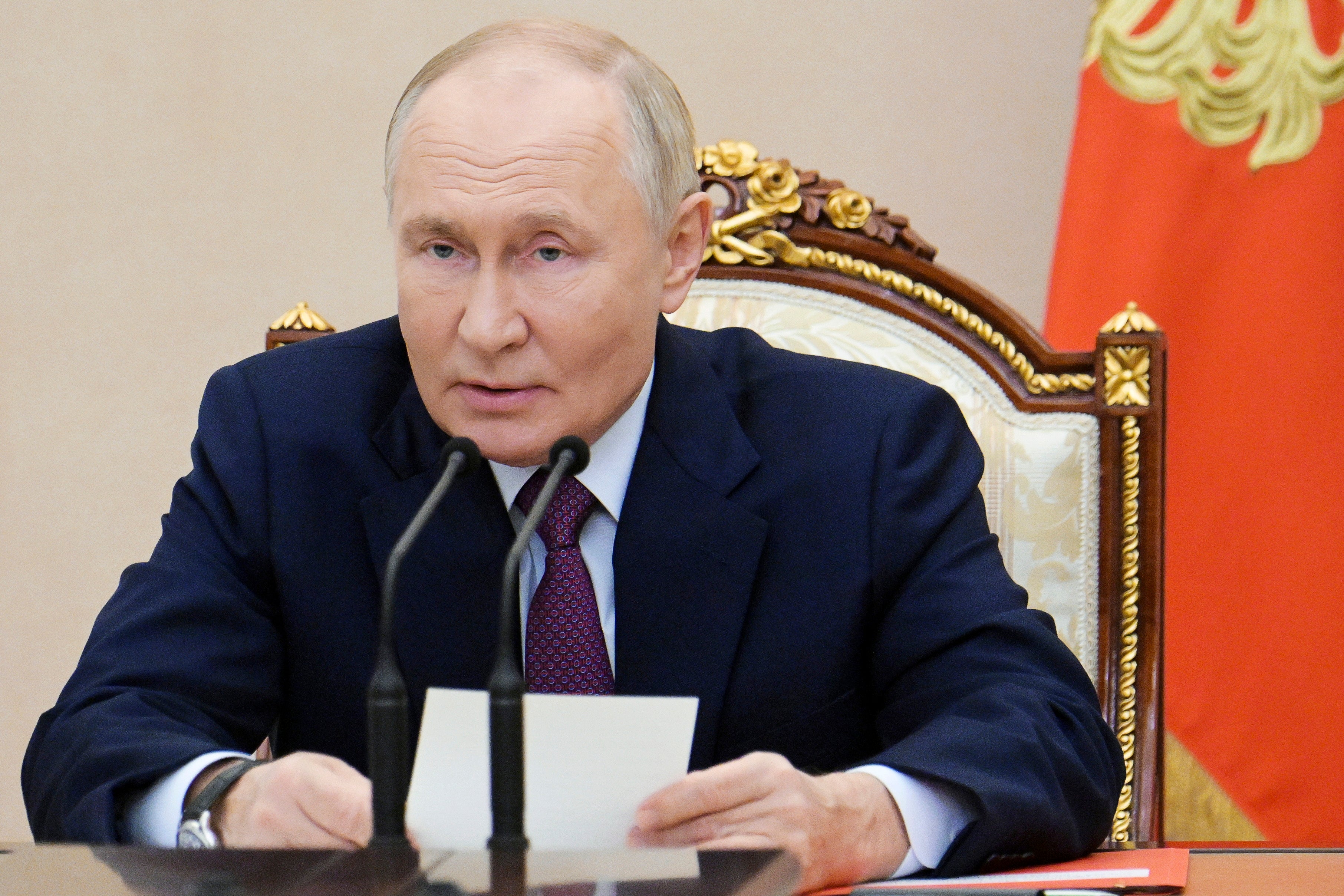Your support helps us to tell the story
This election is still a dead heat, according to most polls. In a fight with such wafer-thin margins, we need reporters on the ground talking to the people Trump and Harris are courting. Your support allows us to keep sending journalists to the story.
The Independent is trusted by 27 million Americans from across the entire political spectrum every month. Unlike many other quality news outlets, we choose not to lock you out of our reporting and analysis with paywalls. But quality journalism must still be paid for.
Help us keep bring these critical stories to light. Your support makes all the difference.
Russia is testing the readiness of a missile unit that forms part of its strategic nuclear forces, the defence ministry has said – with Russian officials having repeatedly raised the spectre of nuclear war over the West’s support for Ukraine.
The drill involves a unit equipped with Yars intercontinental ballistic missiles which are capable of reaching US cities and can be equipped with multiple nuclear warheads, a reminder to the world that Russia possesses the world’s largest atomic arsenal. Troops are practising moving the missiles in the field over distances of up to 60 miles (100 kilometres) under camouflage and protecting them against air attack and enemy sabotage groups, the ministry said.
The test is taking place in the Tver region, northwest of Moscow, in the same week that Nato conducted its annual nuclear exercise and Ukrainian President Volodymyr Zelensky unveiled his “victory plan” for the war.
President Vladimir Putin is counting on Russia’s vast arsenal of thousands of warheads and hundreds of missiles as a deterrent to counterbalance Nato’s significant advantage in conventional weapons, aiming to deter what he perceives as threats to Russia’s sovereignty and territorial integrity.
Video published by the military news channel Zvezda, accompanied by dramatic music, showed the missiles being rolled out of hangars on massive wheeled mobile launchers and travelling by road at night. Other footage showed soldiers moving through woods and firing weapons.

Putin said last month that Moscow had extended the list of scenarios that could prompt it to use nuclear weapons, effectively lowering the threshold for their use.
He said Russia would consider such a “possibility” of using nuclear weapons if it detected the start of a massive launch of missiles, aircraft and drones into its territory, which presented a “critical threat” to the country’s sovereignty.
He added: “It is proposed that aggression against Russia by any non-nuclear state, but with the participation or support of a nuclear state, be considered as their joint attack on the Russian Federation.”
The country’s nuclear arms were “the most important guarantee of security of our state and its citizens”, the Kremlin leader said.
Ukraine has criticised these threats as “nuclear sabre-rattling” to deter its allies from providing further support and Nato’s new chief Mark Rutte has also said the alliance will not be intimidated by Russian threats.
On Thursday, Mr Zelensky appeared to suggest Ukraine could seek nuclear weapons unless it is given Nato membership but Putin said he would not allow his enemy to obtain them.
In June, Putin issued a warning to European nations backing Ukraine, stating that Russia possessed “many more [tactical nuclear weapons] than are present on the European continent, even if the United States relocates theirs.”
Russia previously held two rounds of exercises involving Yars missile units in July. It has also held three sets of drills this year to test preparations for the launch of tactical nuclear missiles, which have a shorter range and lower yield than intercontinental strategic rockets.
The defence ministry said separately on Friday that it had conducted a test of a Kalibr cruise missile, another weapon capable of carrying a nuclear warhead.
It said the Kalibr was launched from a frigate in the Barents Sea and hit a target more than 1,300 km away in the Arkhangelsk region of northern Russia.
Reuters contributed to this report.